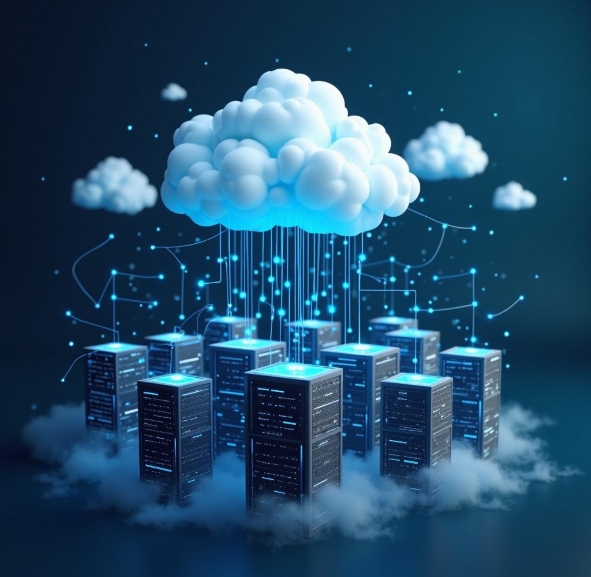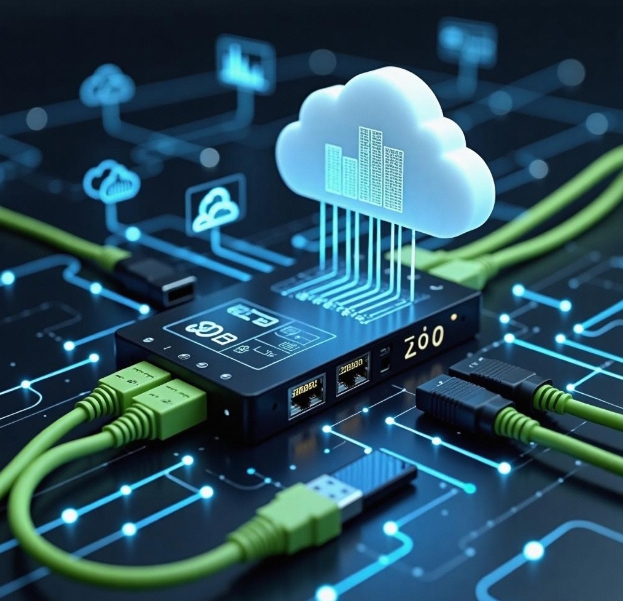From Big Data to Cloud Computing: Technological Evolution and Future Development
- latest articles
- 1.DApp Development & Customization: Merging Diverse Market Needs with User Experience 2.Analysis of the Core Technical System in DApp Project Development 3.How to achieve cross-chain interoperability in Web3 projects? 4.How does the tokenization of points reconstruct the e-commerce ecosystem? 5.How to Set and Track Data Metrics for a Points Mall? 6.What is DApp Development? Core Concepts and Technical Analysis 7.Inventory of commonly used Web3 development tools and usage tips 8.Development of a Distribution System Integrated with Social E-commerce 9.Six Key Steps for Businesses to Build a Points Mall System 10.What is DApp Development? A Comprehensive Guide from Concept to Implementation
- Popular Articles
- 1.Future Trends and Technology Predictions for APP Development in 2025 2.Analysis of the DeFi Ecosystem: How Developers Can Participate in Decentralized Finance Innovation 3.From Zero to One: How PI Mall Revolutionizes the Traditional E-commerce Model 4.DAPP Development | Best Practices for Professional Customization and Rapid Launch 5.Recommended by the Web3 developer community: the most noteworthy forums and resources 6.From Cloud Computing to Computing Power Leasing: Building a Flexible and Scalable Computing Resource Platform 7.How to Develop a Successful Douyin Mini Program: Technical Architecture and Best Practices 8.Shared Bike System APP: The Convenient Choice in the Era of Smart Travel 9.How to Create a Successful Dating App: From Needs Analysis to User Experience Design 10.From Design to Development: The Complete Process of Bringing an APP Idea to Life
Introduction
In recent years, with the rapid development of information technology, data production and storage have experienced explosive growth. How to efficiently collect, store, process, and analyze these massive amounts of data has become a major challenge in modern technology and business fields. Big Data and Cloud Computing, as two key technologies addressing this issue, have gradually become important forces driving digital transformation and industrial upgrading.
Big Data refers to the technology used for storing, managing, and analyzing data through new technical means when the volume, variety, and velocity of data exceed the efficient processing capabilities of traditional database management tools. Meanwhile, Cloud Computing provides shareable computing resources and services—including storage, computation, and databases—via the internet ("the cloud"), transforming traditional IT resource management models.
This article will explore the technological evolution from Big Data to Cloud Computing, their integration, and future development trends, with a focus on how they jointly drive digital transformation and innovation.
1. The Rise and Evolution of Big Data
1.1 Definition and Characteristics of Big Data
The concept of "Big Data" emerged from the need to process massive datasets. It refers to data collections that cannot be efficiently handled by traditional data storage, processing, and analysis methods due to their large volume, complex structure, or frequent updates. Big Data has several notable characteristics:
Volume: Refers to the enormous size of data, often exceeding the processing capacity of traditional databases.
Velocity: Data is generated at a very fast pace, often in real-time.
Variety: Data comes from diverse sources and types, including structured, semi-structured, and unstructured data.
Low Value Density: Only a small portion of Big Data holds actual value.
Veracity: Data in Big Data may contain noise, requiring data cleaning and filtering.
1.2 Evolution of Big Data Technologies
The development of Big Data technology has gone through several important stages:
Data Storage Stage: Initially, Big Data technology relied on traditional database management systems, such as Relational Database Management Systems (RDBMS). As data volumes grew, traditional databases became inadequate for large-scale data storage needs. Consequently, distributed storage technologies emerged, with Hadoop being the most representative, using the Hadoop Distributed File System (HDFS) to store massive data and fostering the vigorous development of Big Data.
Data Processing Stage: Storage is only the first step; next comes data processing and analysis. Traditional data processing methods proved insufficient for large-scale data. To address this challenge, parallel computing models like MapReduce emerged. MapReduce uses a distributed computing model to break tasks into smaller parallel processes, significantly improving data processing efficiency.
Data Analysis Stage: Data storage and processing are merely the foundation of Big Data technology; data analysis is the ultimate goal. With the rapid advancement of artificial intelligence and machine learning technologies, Big Data-based analysis and mining have entered a new era. Using advanced analytical tools and algorithms, businesses can extract valuable insights from massive datasets and make more precise decisions.
1.3 Applications of Big Data
Big Data applications have permeated various industries. Here are some typical use cases:
E-commerce Industry: E-commerce platforms analyze user browsing and purchasing behavior data to provide personalized recommendations, improving sales conversion rates.
Financial Industry: Big Data helps banks and financial institutions analyze user credit risks, predict market trends, and optimize investment decisions.
Healthcare: Analyzing medical data can help doctors detect potential disease risks earlier, promoting personalized medicine and precision treatment.
Intelligent Transportation: Big Data technology assists traffic departments in analyzing traffic flow, optimizing traffic scheduling, and improving transportation efficiency.
2. The Rise and Development of Cloud Computing
2.1 Definition and Characteristics of Cloud Computing
Cloud Computing refers to a computing model that provides IT resources such as computation, storage, and networking to users via the internet. Users can dynamically allocate resources based on demand without concerning themselves with underlying hardware and software architectures. Cloud Computing has several notable characteristics:
On-Demand Self-Service: Users can dynamically configure computing resources as needed, saving costs.
Resource Pooling: Cloud computing platforms centrally manage and schedule computing resources, achieving resource sharing through virtualization technology.
Elastic Scalability: Cloud platforms can scale computing resources up or down in real-time based on load changes, offering high flexibility.
High Reliability: Through redundant backups and disaster recovery mechanisms, cloud computing ensures high availability of data and services.
2.2 Development History of Cloud Computing
The development of Cloud Computing can be traced back to the 1960s when the concept of remote computer access emerged. With the advancement of internet technology, Cloud Computing gradually moved from theory to practice.
Rise of Virtualization Technology: Virtualization technology is the foundation of Cloud Computing, simulating multiple virtual computers through software to achieve hardware resource sharing. Virtualization technologies like VMware and Xen laid the groundwork for the rapid development of Cloud Computing.
Cloud Service Models: Cloud computing services are divided into three main models based on function and service level:
IaaS (Infrastructure as a Service): Provides infrastructure such as computing, storage, and networking, allowing users to rent servers, storage, and other resources on demand.
PaaS (Platform as a Service): Provides platforms for developing, running, and deploying applications, enabling users to build and manage their own applications.
SaaS (Software as a Service): Directly provides application software; users only need to use the software via the internet without worrying about its underlying architecture.
Public Cloud and Private Cloud: Cloud computing is categorized by service ownership into public cloud, private cloud, and hybrid cloud. Public cloud is a shared platform provided by third parties, private cloud is a dedicated platform built by enterprises, and hybrid cloud combines the advantages of both public and private clouds.

2.3 Applications of Cloud Computing
Cloud Computing is widely used across various industries. Typical applications include:
Data Storage and Backup: Enterprises can store data in the cloud, solving data storage issues while ensuring data security and high availability.
Enterprise Resource Planning (ERP): Many companies migrate their ERP systems to the cloud to achieve cost optimization and business process automation.
Big Data Analysis: Cloud computing platforms provide powerful computing and storage capabilities, making Big Data analysis more efficient and convenient.
Cloud Office: With the rise of remote work, online collaboration tools provided by cloud computing (such as Google Workspace and Microsoft 365) have become essential supports for daily business operations.
3. Integration from Big Data to Cloud Computing
3.1 Deep Integration of Big Data and Cloud Computing
The combination of Big Data and Cloud Computing provides strong support for addressing issues related to data storage, processing, analysis, and computing resources. The integration of Cloud Computing's elastic resources with Big Data's high-performance processing capabilities enables more efficient and cost-effective data storage and computation.
Data Storage and Cloud Computing: Big Data technology requires robust storage capabilities, and the distributed storage and computing power provided by cloud computing platforms meet this need perfectly. Enterprises no longer need to purchase expensive hardware; instead, they can flexibly expand storage space through cloud services.
Big Data Analysis and Cloud Computing: Cloud platforms offer powerful computing capabilities and efficient data processing for Big Data analysis. Businesses can run Big Data analysis tasks on cloud platforms, gain real-time insights, and make decisions based on the analysis results.
Cost Efficiency: Storing and processing Big Data often requires substantial computing resources and high costs. Cloud Computing's pay-as-you-go model and elastic scalability significantly reduce the costs of Big Data storage and processing, making Big Data applications more accessible.
3.2 Cloud Computing's Role in Promoting Big Data
Cloud Computing provides strong support for the development of Big Data:
Lowering the Barrier to Big Data Processing: Traditional Big Data processing required enterprises to purchase and maintain hardware equipment themselves, whereas Cloud Computing offers convenient computing and storage resources, lowering the barrier to Big Data processing.
Enabling Real-Time Big Data Analysis: Cloud Computing provides powerful computing capabilities and efficient resource scheduling, allowing enterprises to process and analyze Big Data in real-time and respond quickly to market changes.
Improving Flexibility of Big Data Applications: The elastic computing capabilities provided by Cloud Computing enable Big Data applications to automatically adjust resources based on actual needs, enhancing application flexibility.
4. Future Development Trends
4.1 Integration of Cloud Computing and Artificial Intelligence
In the future, Cloud Computing and Artificial Intelligence (AI) will deeply integrate. Cloud platforms will offer more AI services, such as machine learning, natural language processing, and image recognition. Enterprises will be able to use AI models on cloud platforms for Big Data analysis, further enhancing intelligent decision-making capabilities.
4.2 Development of Edge Computing
With the proliferation of Internet of Things (IoT) devices, Edge Computing is becoming an extension of Cloud Computing. Edge Computing moves data processing and storage from the cloud to the device side, reducing latency and improving real-time responsiveness. In the future, Cloud Computing and Edge Computing will jointly drive the development of smart devices and applications.
4.3 Multi-Cloud and Hybrid Cloud Architectures
As enterprise IT needs diversify, future Cloud Computing will increasingly trend towards multi-cloud and hybrid cloud architectures. Enterprises will no longer rely on a single cloud service provider but will choose different cloud services as needed to build flexible and scalable cloud infrastructure.
Conclusion
From Big Data to Cloud Computing, each step in technological evolution is driving the digital transformation of society and enterprises. Big Data offers limitless possibilities for information storage and analysis, while Cloud Computing provides elastic and efficient processing capabilities for this data. As technologies continue to develop and integrate, Big Data and Cloud Computing will become more closely intertwined in the future, ushering in the era of intelligence. Enterprises must keep up with this trend, leveraging the advantages of Cloud Computing and Big Data to continuously enhance their competitiveness and innovation capabilities.
-

Applications and Challenges of Cloud Computing in the Internet of Things (IoT)
With the continuous advancement of information technology, cloud computing and t···
-

Integration of Cloud Computing and Artificial Intelligence: Enhancing Intelligent Applications
With the rapid advancement of technology, cloud computing and artificial intelli···
-

Data Security and Privacy Protection in Cloud Computing Applications
With the continuous advancement of information technology and the rapid developm···

 Blockchain
Blockchain










